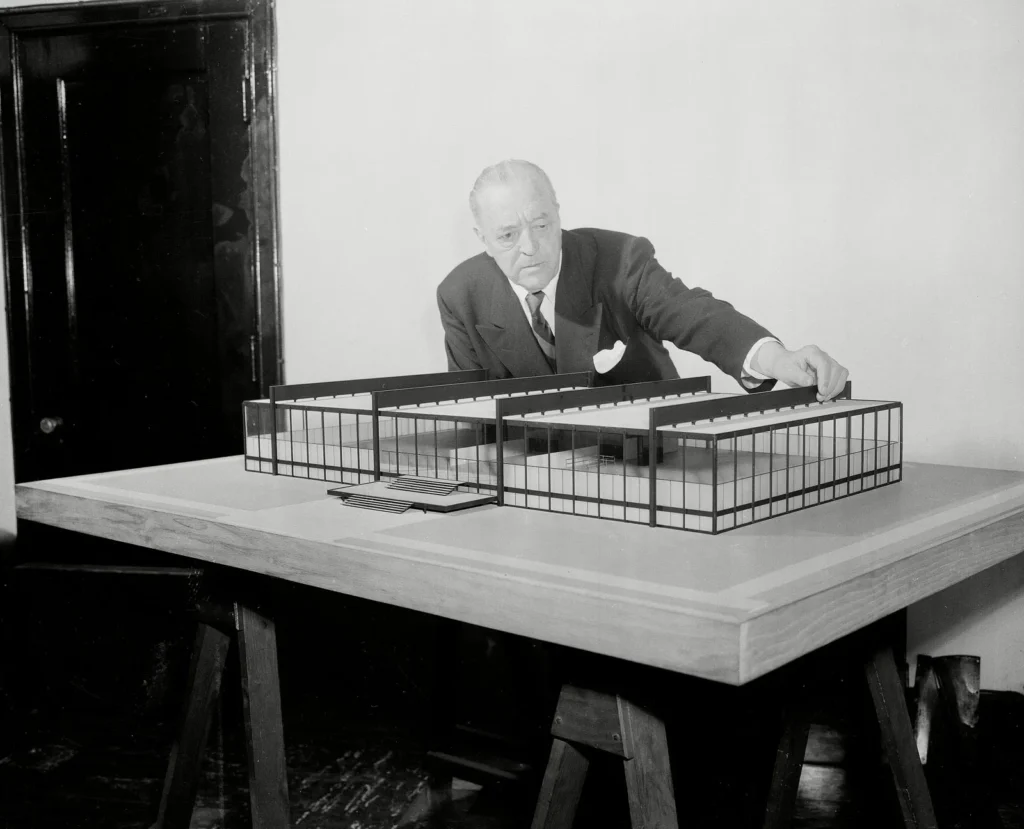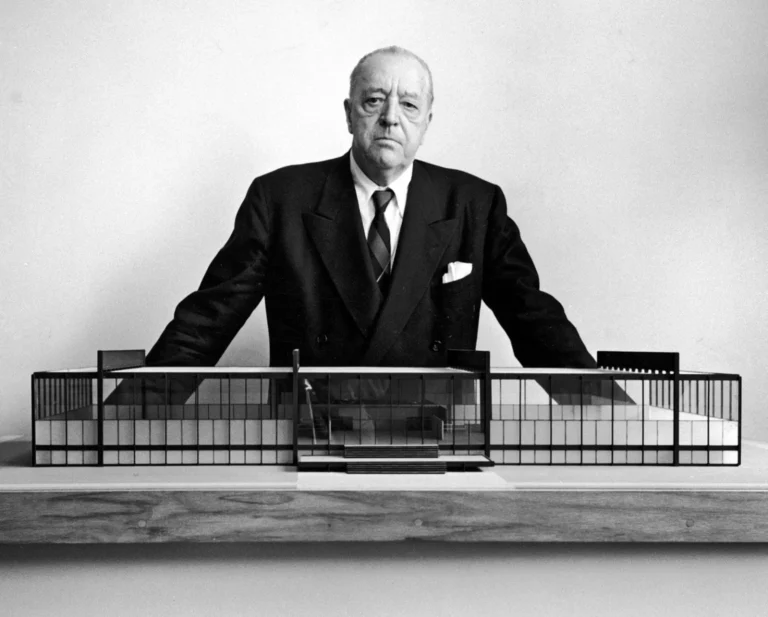
Ludwig Mies van der Rohe – A Pioneer of Modern Architecture and Minimalism
Ludwig Mies van der Rohe (1886–1969) was one of the most influential architects of the 20th century, establishing the philosophy of “Less is more” in modern architecture. Through transparency, simple structures, and industrial materials, he perfected minimalist architecture.
Early Life and Education
Mies van der Rohe was born in Germany and developed an interest in architecture from an early age. Although he had no formal education, he began his career as an assistant architect and was influenced by Peter Behrens, a pioneer of modern architecture.
Architectural Style and Philosophy
Mies van der Rohe was a proponent of simplicity and functionalism in architecture. He believed that form should follow function and that beauty lies in simplicity. His main design principles included:
Use of clean and simple lines
Transparency and extensive use of glass and steel
Open and flexible spaces
Elimination of unnecessary ornamentation
Notable Works
Barcelona Pavilion (1929) – A symbol of modern architecture, featuring a combination of marble, steel, and glass.
Farnsworth House (1951) – A masterpiece of minimalist architecture, with glass walls and a simple structure.
Seagram Building (1958) – One of the first modern skyscrapers in New York, known for its transparent and minimalistic design.
Legacy and Influence
Mies van der Rohe had a profound impact on modern architecture and the minimalist movement. His style continues to be utilized in contemporary architecture, and his design principles are evident in many modern buildings.
Conclusion
By emphasizing simplicity, functionalism, and innovative construction techniques, Ludwig Mies van der Rohe revolutionized modern architecture. His famous quote, “Less is more,” remains an inspiration for architects and designers worldwide.


No comments yet.